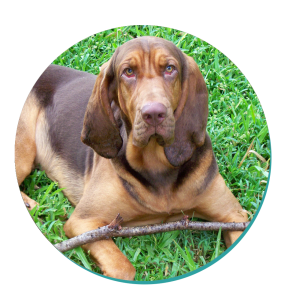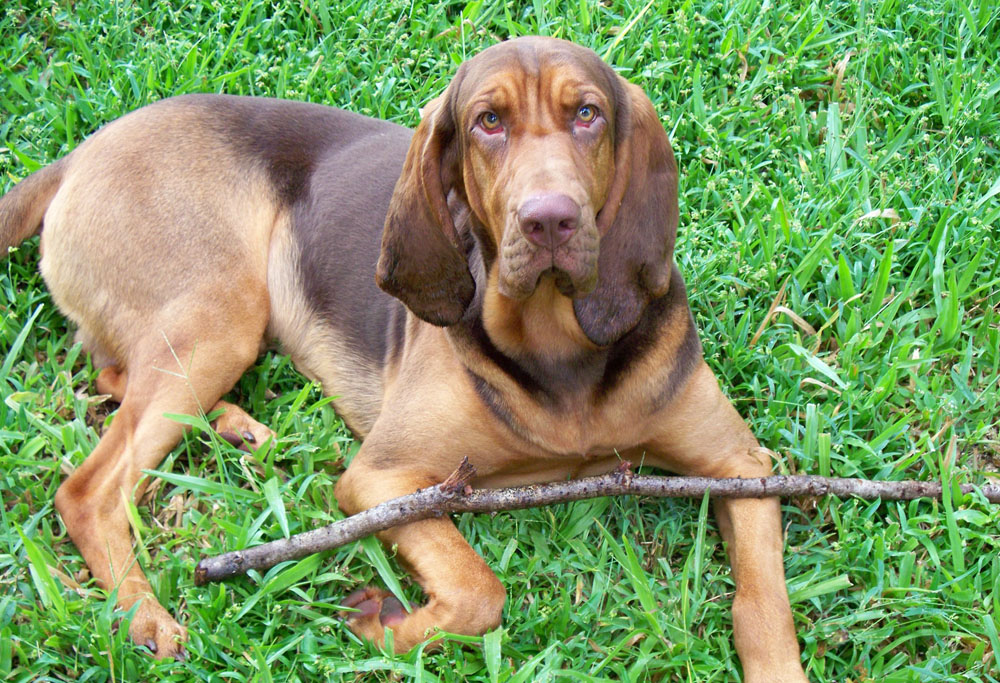In this Dog Breed Corner, our trail has led us to the Bloodhound. Learn all about the history, temperament, and health needs of this tracking dog. If you’re on the hunt for a local Dog Sitter for your Bloodhound, check out Mad Paws!
 Quick Facts ✔
Quick Facts ✔
Height – 58 – 70cm
Weight – 36 – 50kg
Lifespan – 8 – 10 years
Country of origin – England (although Bloodhound-like dogs existed in Ancient Mediterranean societies)
Breed type – Hound
- Patient, attentive Owners
- Moderately active Owners
- Families with children and other pets
Bloodhound Breed History ♜
Although little is known about the specific origins of the Bloodhound, one thing is for sure: their canine sense of smell was a major asset. Some of their early duties included tracking down wolves and deer, and they were often owned by royal families and monasteries in Europe.
Eventually, deer and wolves became less common in Europe, and the Bloodhound was surpassed by breeds that would be better suited to faster burrowing animals like foxes, badgers, and rabbits.
Even so, the Bloodhound never fell out of favour completely. Instead, Owners saw their potential as human-trackers. Dating back to Medieval Times, these dogs have aided in finding missing humans, poachers, and criminals. Even nowadays, in many countries in the world, the information gathered by a Bloodhound can be used as evidence in court. Such is the renown of their sense of smell!
Personality, Traits, & Trainability ★
Despite their serious professional lives, Bloodhounds are big, loving cuddlers. They are patient and tolerant, and they’re often happy to let other pets and children climb all over them.
That said, breeders shaped Bloodhounds to be independent and wilful. If they pick up a scent that they want to follow, there’s not much that will disrupt their focus. And when they’re young, they’ll find just about any scent interesting. Young Bloodhounds also face a unique challenge: they’re food-centric, and their definition of food is very loose. With this in mind, it’s crucial to keep all small items – even remotes, toothbrushes, and phone chargers – beyond their reach.
As you can see, this can make training a bit of a challenge. Bloodhounds require experienced trainers, or trainers with ample patience. Proper exercise is also a must, whether it’s with their Owner or an experienced Dog Walker. Nature crafted these dogs to follow a scent, day and night, over hills and through rivers and ravines. Even though they’re slower than other dogs, they love long, meandering walks.
One last thing to consider when it comes to temperament is that the Bloodhound is a vocal breed. After all, there’s a reason Elvis Presley wrote a song about their crying. As an Owner, you’ve got to be ready to hear their full range of talents: howling, barking, whining, and grunting.
Bloodhound Health and Grooming ⌂
Although they have a relatively short coat, the Bloodhound still requires more than a bare minimum grooming routine. Be ready to brush them from nose to tail once a week, and prepare yourself for the bi-annual coat shedding. However, the most important part of your grooming ritual will be keeping their skin folds and ears clean. Slobber (of which a Bloodhound creates a lot) and dirt can get trapped in those adorable wrinkles and cause infection.
When it comes to health, Bloodhounds, like other large breeds, are prone to bloat and hip dysplasia in dogs. It also pays to watch for issues that pertain to their long, droopy eyelids, which can become dry.
Lastly, as we mentioned before, Owners should pay attention to their eating habits. Many vet visits involving Bloodhounds centre around something they swallowed, like a ball of yarn or a spiny plant.
Fun Fact about the Bloodhound ♥
For some, the name “Bloodhound” is a bit off-putting. In reality, though, the moniker never had anything to do with this pup’s role as a hunting dog. Instead, the name comes from the strict record-keeping practices of the breed’s early days. The monks responsible for breeding these dogs put such care into maintaining the bloodline, that they started calling the dogs “blooded” as in “having aristocratic blood.”

